#Bela Zola
Explore tagged Tumblr posts
Text

Dionne Warwick and Burt Bacharach recording a song at the Pye studios in London. 29th November 1964. Photo by Bela Zola.
116 notes
·
View notes
Text

Bir asker, Tiflis'teki 1 Mayıs 1960 kutlamaları sırasında oğlunu yağmurdan koruyor. Fotoğraf Bela Zola tarafından çekildi.
0 notes
Text

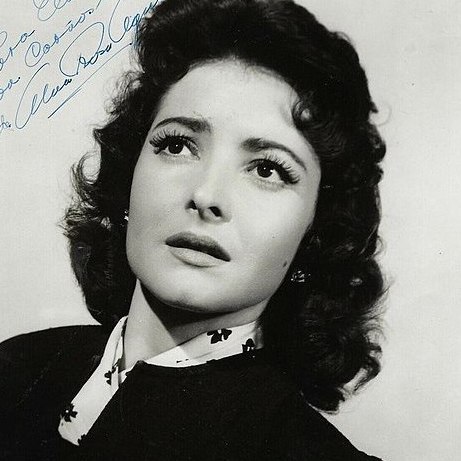
Propaganda
Gloria Holden (Dracula’s Daughter, The Life of Emile Zola)— She deserves to be alongside Bela Lugosi and Christopher Lee as the hottest classic movie vampires. She was the first major examples of the reluctant vampire and the lesbian vampire and should have gone on to become an iconic scream queen. Her voice, her amazing gowns, and her EYES! I would let her eat me any day
Alma Rosa Aguirre (Nosotras las Taquigrafas)—no propaganda submitted
This is round 1 of the tournament. All other polls in this bracket can be found here. Please reblog with further support of your beloved hot sexy vintage woman.
[additional propaganda submitted under the cut]
Gloria Holden:
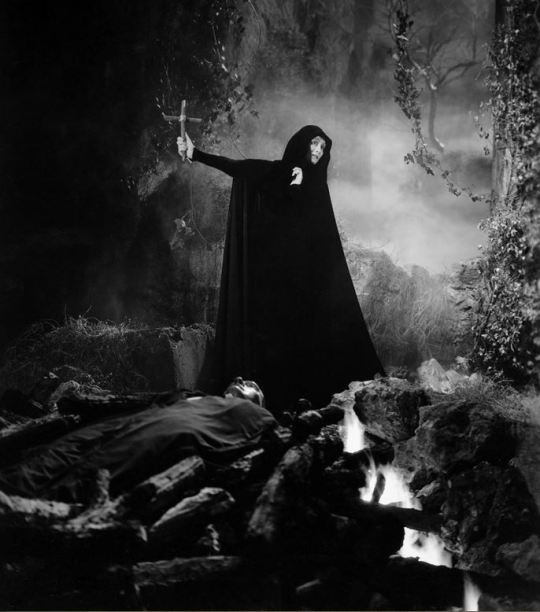
She made an indelible impression on me in the title role in "Dracula's Daughter" as an elegantly tormented sapphic vampire failing to repress her urges to feed on women. What can I say, I'm gay.
ooooh my god. oooooh my god. She's got the cold high society woman with secret anguish thing nailed down. Also her role as Dracula's Daughter actually inspired Anne Rice. ok.
We owe Gloria Holden for the Interview With the Vampire book and the gay awakenings of baby goths everywhere.
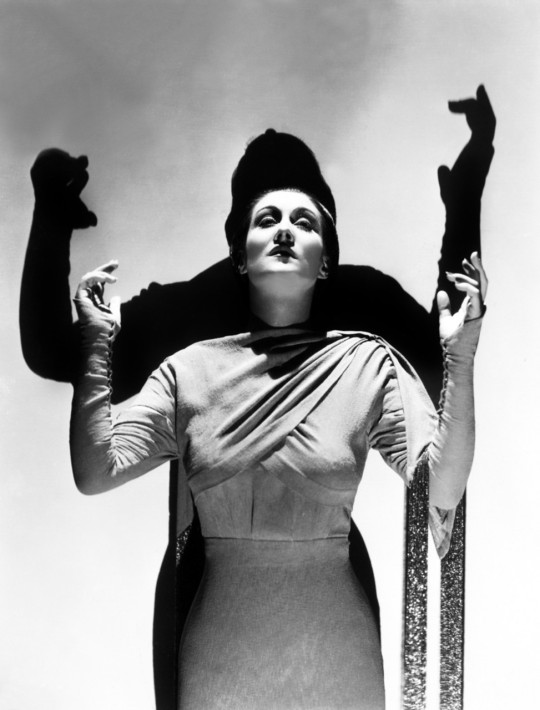
Her performance in Dracula's Daughter inspired Anne Rice and she's name dropped in Queen of the Damned. A queer icon, for sure. And surely this poll needs some horror movie queens?
i'm nominating her particularly for her work as a lesbian vampire in dracula's daughter (1936), which was about as overt about the concept that she was trying to suck this unsuspecting lady's blood in a gay way as it possibly could be under the hayes code

Gifset: https://www.tumblr.com/down-in-dixie/700742136441831424
Gifset 2: https://www.tumblr.com/junkfoodcinemas/687098898667405312/draculas-daughter-1936-dir-lambert-hillyer

337 notes
·
View notes
Text

Bela Zola. Tea time at Waterloo Station, London. 3rd April 1957.
97 notes
·
View notes
Text

Elvis Presley with fans before press conference in Germany, March 1960. Photo by Bela Zola/Daily Mirror.
22 notes
·
View notes
Text

Brigitte Bardot
Cannes Film Festival
France, 2nd May 1955
(Photo by Bela Zola/Mirrorpix/Getty Images)
120 notes
·
View notes
Text
Hollywood actress Grace Kelly seen here during her interview with Daily Mirror reporter Donald Zec at the 1955 Cannes Film festival . 9th May 1955. (Photo by Bela Zola/Daily Mirror /Mirrorpix via Getty Images)
6 notes
·
View notes
Text

Paul Atkinson, guitarist of The Zombies, with his fiancee Molly Molloy, an American go go dancer, in London, 15th September 1967🪷🪷🪷
📸Bela Zola
Via @isabelfutre on Instagram🪷
#60s icons#girlsofthesixties#60s couples#paul atkinson#the zombies#fiancée#molly molloy#swinging sixties#swinging london#1967#🇬🇧
3 notes
·
View notes
Text
Shuffle your ‘on repeat’ playlist and post the first ten tracks, then tag ten people.
Oh, yes: tag game me! I was tagged by @akitasimblr, who is one of the first simblrs I ever followed. I love her edits, her sims (Maria and her "Woof-Woof" live in my heart rent-free), the Harper legacy (OMG, what a lesson on how to play legacies and I am failing splendidly...) and of course, LE CHAT. I was also tagged by my dear @greighish, who is the kind of person who when they enter the scene, they class up the joint, conversations get smarter, the air quality gets better, the silver polishes itself...You get the (museum-quality) picture: cool writer, music connoisseur, creative simmer, and kind and lovely human.
Thanks for the tag, friends!❤️
Umm... so nevermind that most of the selections on my playlist consist of morbid-sounding titles that make me seem like a hella off-brand Wednesday Adams. I am actually quite cheerful and upbeat when I'm lip synching to Pantera’s “Walk”.
Deadcrush- alt-J
The Actor- alt-J
Ave Plague- King Plague
Half Life- Zola Jesus
Wolf Like Me- TV On The Radio
Forever Suffer- Dark
The Killing Moon- Echo and the Bunnymen
Bela Lugosi Is Dead- Bauhaus
Taro- alt-J
Riverside- Agnes Obel
Who is gettin' tagged? Cool peeps: @crabbeychick, @silentsundown, @box-of-sims, and @ladysakuraavalon. You know the drill: feel free to ignore, etc. etc. etc. ❤️
#tag game#i love my moots#musical tag#non sims#i'm on an alt-j listening spree#look! VAMPIRES EVEN IN MY PLAYLIST#Staaaahp it!
23 notes
·
View notes
Text
The 99 Best Halloween Songs Your Party Playlist Needs ASAP
Cosmopolitan - 8/3/23
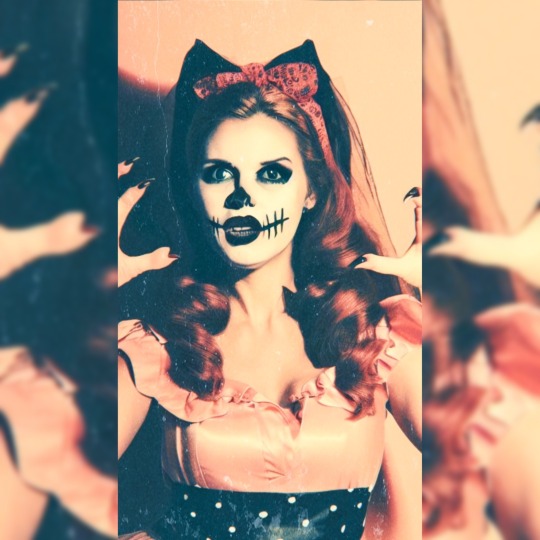
Bloody Mary - Lady Gaga
I Want Candy - Bow Wow Wow
Superstition - Stevie Wonder
Werewolves of London - Warren Zevon
Halloween - Misfits
Highway to Hell - AC/DC
Scary Monsters (And Super Creeps) - David Bowie
The Number of the Beast - Iron Maiden
Dracula's Wedding - Outkast
Is It Scary - Michael Jackson
Cemetery Drive - My Chemical Romance
Dracula - Gorillaz
Paint It, Black - The Rolling Stones
Heads Will Roll - Yeah Yeah Yeah
Unholy - Sam Smith ft. Kim Petras
Goo Goo Muck - The Cramps
Haunted - Taylor Swift
I Love the Dead - Alice Cooper
There Will Be Blood - Kim Petras
Nightmare - Halsey
Scary Monsters and Nice Sprites - Skrillex
Monster - Lady Gaga
Take What You Want - Post Malone
Disturbia - Rihanna
Feed My Frankenstein - Alice Cooper
Everyday Is Halloween - Ministry
She Wolf - Shakira
Bury a Friend - Billie Eilish
Dracula’s Wedding - Outkast feat. Kelis
Ghostbusters - Ray Parker Jr.
Monster - Kanye West feat. Jay Z, Rick Ross, Nicki Minaj, and Bon Iver
Spellbound - Siouxsie and the Banshees
Season of the Witch - Donovan
All Around Me - Flyleaf
Tombstone, Baby - Peaches
Somebody’s Watching Me - Rockwell
Monsta’ Mack - Sir Mix-a-Lot
Witchy Woman - Eagles
Enter Sandman - Metallica
Love Potion No. 9 - The Clovers
Black Magic Woman - Santana
Suspiria - Goblin
I Was a Teenage Werewolf - The Cramps
Debaser - Pixies
Rhiannon - Fleetwood Mac
Time Warp - from The Rocky Horror Picture Show
Release the Bats - The Birthday Party
X Files - Génération TV
Dead Man’s Party - Oingo Boingo
Howlin’ for You - The Black Keys
Shadows of the Night - Pat Benatar
Cold - The Cure
Ghost Ride It - Mistah F.A.B.
I Put a Spell on You - Screamin’ Jay Hawkins
Hungry Like the Wolf - Duran Duran
Halloween Theme - John Carpenter
Monster Mash - Bobby “Boris” Pickett & The Crypt-Kickers
Bela Lugosi’s Dead - Bauhaus
Nothing's Gonna Hurt You Baby - Cigarettes After Sex
Night - Zola Jesus
The Haunted Man - Bat for Lashes
Red Right Hand - Nick Cave & The Bad Seeds
Never Land - Sisters of Mercy
Tainted Love -Soft Cell
The Devil Went Down to Georgia - Primus
Psycho Killer - Talking Heads
Werewolf Bar Mitzvah - Tracy Morgan and Donald Glover
(Don’t Fear) The Reaper - Blue Öyster Cult
Turn Off the Light - Kim Petras feat. Elvira, Mistress of the Dark
Ghost Town - The Specials
(Ghost) Riders in the Sky - Johnny Cash
Are You Ready for Freddy - The Fat Boys
Living Dead Girl - Rob Zombie
Devil in Me - Halsey
Zombie - The Pretty Reckless
Seven Devils - Florence and the Machine
Black Magic - Little Mix
Kill V. Maim - Grimes
Brujas - Princess Nokia
Mothercreep - FKA Twigs
Hang Me - Tancred
Haunted - Beyoncé
Bring Me to Life - Evanescence
Stranger Than Earth - Purity Ring
Bitch - Allie X
Roses - ABRA
Chimera - HANA
Gemini Feed - BANKS
Baby You're a Haunted House - Gerard Way
Zombie - The Cranberries
Spooky Scary Skeletons (Dma Illan Remix) - Andrew Gold
The Monster - Eminem feat. Rihanna
This Is Halloween - from The Nightmare Before Christmas
A Nightmare On My Street - DJ Jazzy Jeff and The Fresh Prince
Antichrist - The 1975
I'd Rather Be Burned As a Witch - Eartha Kitt
I Was All Over Her - Salvia Palth
Baby One More Time - The Marías
Thriller - Michael Jackson
3 notes
·
View notes
Text

Ivy Close and Séverin-Mars in La Roue (Abel Gance, 1923)
Cast: Séverin-Mars, Ivy Close, Gabriel de Gravone, Pierre Magnier, Georges Térof, Gil Clary, Max Maxudian. Screenplay: Abel Gance. Cinematography: Gaston Brun, Mac Bujard, Léonce-Henri Burel, Maurice Duverger. Art direction: Robert Boudrioz. Film editing: Marguerite Beaujé, Abel Gance. Music: Arthur Honegger.
The plot is operatic, the technique is novelistic, and the aim is tragic. Abel Gance's La Roue (aka The Wheel) never satisfies on any of those counts, but it's not without a lot of effort on his part as well as his actors and technicians. At its premiere, it ran for somewhere between seven-and-a-half and nine hours (depending on which source you trust), spread over three days, and was a success, earning praise from Jean Cocteau among others. Gance then produced a cut that ran for two and a half hours, which was the version most people saw for many years until film historians set about to reproduce the original. That restoration is the one I sat through for sevenish hours spread over four nights on the Criterion Channel. I have seen seven-hour movies (and some that seemed like it) before, most notably Bela Tarr's Sátántangó (1994). The urge I usually have afterward is to try to justify the expenditure of time, typically by categorizing it as an "immersive experience." That approach works with films like Tarr's, which has a grounded reality to it that provides a look into a human existence other than my own, which is the aim of all narrative art. It's less easily justified when the film is as preposterous as Gance's is in many ways. I said it was operatic in its plotting, and here it's useful to think of the melodramatic excesses of works like Verdi's Il Trovatore, based on a florid Spanish play that involves foundlings, mistaken identities, and people torn between passion and duty. La Roue has a foundling, survivor of a train wreck, rescued by a railroad engineer who raises her along with his own son, allowing both of them to believe they are siblings, which works until she blossoms into a young woman and first the father and then the son realize they're in love with her. The treatment of this story evokes, as others have noted, the novels of Victor Hugo and Émile Zola, but it also reminds me of Thomas Hardy's works, in which fate (which Hardy calls "hap," or the blind workings of chance) forestalls any efforts by the protagonists to chart their own course. And since the story involves a kind of incestuous passion, the legend of Oedipus comes to mind, and sure enough Gance quotes Sophocles in one of the intertitles. But of course it's a movie, and that necessitates a good deal of spectacle, starting with the train wreck that sets the plot in motion. La Roue is never dull, and it's sometimes emotionally affecting, but it's not an opera (although Arthur Honegger's score suggests its potential in that regard) and it's not a novel or a tragedy. It's a movie, and one with a great deal to watch if you're willing to commit seven hours to it, but I think you have to be devoted to learning about the craft of movie-making to profit much from it.
1 note
·
View note
Text
The Coronation of Queen Elizabeth II! It Seemed That Everyone in The World Was Here.
— By Mollie Panter-Downes | June 5, 1953 | Letter From LondonJune 13, 1953 Issue | May 5, 2023

Photograph by Bela Zola/Getty Images
June 4
This Coronation, the older generation of the young Queen’s subjects say contentedly, was the last they ever expect to see. It was probably the most superb and certainly the most moving one that anybody now living has seen. To lots of English, going over every minute of the big day in endless discussions, it seems to have been a vast prize package that made up for the long years of drabness. Its complicated rituals and pageantry contained elements of the ancient magic of the Old Testament, of Hans Christian Andersen, and of “The Golden Bough;” a bit of “Plain Tales from the Hills;” and various antique traditions treated with brilliant modern showmanship, and it turned out wonderful. Everything turned out wonderful but the weather, and even that, Londoners loyally declare between their sneezes, could not spoil it.
On Sunday, the nation asked God to save the Queen in services held in big cathedrals, in the dank Norman chill of little country churches, and on village greens under the undenominational sky. Having made their peace with Heaven, citizens spent Monday stocking up on the big day’s bodily needs. There were long queues at all the bakers’ shops for bread (which ran out, making it almost seem that housewives had panicky ideas of preparing for a prolonged siege), and other queues for sweets to assuage the pangs of thirst, for bottles to do the same thing more festively, and for plastic raincoats to pop prudently into the basket, along with the thermos flasks and the sunglasses. Right up to the last minute, there was a great bustle of workmen hammering and heaving decorations into place along the route. Householders clambered precariously out on their window sills with their mouths full of tacks and their hands full of red-white-and-blue streamers, and a stroll around the sights was enlivened by the risk of a shower of potted hydrangeas, crashing from the hands of florists’ men feverishly fixing shop and hotel fronts with banks of fresh flowers.
Suddenly, after all the doubts and rumors about how many visitors were going to turn up for the Coronation, it seemed that everyone in the world was here. Bus conductors, benignly eying cargoes of passengers who sounded like a Berlitz school with the roof off, bawled “Picc-dilly Cir-cus” to longhaired Dyaks in lounge suits, lovely Indian ladies in dragonfly-colored saris, and unidentified Asian exotics in striped robes and intricately tied headdresses. All day, taxis with their tops down cruised along the processional route (though cruised is maybe hardly the word for the slow crawl through the wedged traffic) with people perched all over them waving Coronation balloons, sucking pop bottles, and gaping up at the banners. By midday, the curbs along the Mall, Hyde Park, Trafalgar Square, and other key spots for viewing the next day’s show were crowded with people setting up housekeeping in the gutter among their bundles and their bits of shabby bedding as handily as though they were back in the old blitz days of sleeping in the tubes. (“Run along to the lady two places down, Mavis, and ask her if she can oblige with a tin opener.”) They had brought their food, their radios, their cards for patience, their old people, who were swaddled in rugs and leaned against lampposts as though they had grown there, and their infants, who placidly chewed on Coronation ribbons pinned to stout maternal bosoms and stared with interest up at the sky, which unkindly darkened and hurled chilly rain on them. The route instantly sprouted acres of sodden mushroom shapes, as people squatted under small tents of blankets or rubber groundsheets. As a demonstration of damp mass devotion, the huddled Coronation-eve multitudes would have mightily astonished the English of other days, who sometimes lampooned their monarchs and sometimes died for them but would never have thought of risking pneumonia for them. It was sad that the Queen did not get the traditional royal weather, which (as one of the “Golden Bough” touches) is supposed to react to the presence of the royal person with beaming skies.
Coronation Day dawned cold and dry, continued cold and wet, and appeared to be about to usher in a new ice age as well as a new Elizabethan Age. It was the meanest June day that anyone can remember. In its glum early light, alarm clocks started to buzz all over London like a swarm of irritable hornets, and the first groups began to traipse through the streets toward the bus and tube stations, where they bought the morning papers and read the great news about the Everest climbers. The police had artfully encouraged citizens to leave their cars at home by ruling off a large Coronation area in which motoring was forbidden, and by issuing passes for various official parking lots that were so far away most people gave up and took to the bus or their own feet. Scotland Yard was also, it developed, extremely canny with its constant propaganda to the effect that if holders of tickets for the official stands did not get along to their places bright and early, they might find it impossible to struggle through the crowds later. This worked fine for everyone but the obedient members of the public, who were in their seats, virtuously munching their breakfast hard-boiled eggs, by six or seven o’clock, as requested, and viewed with no pleasure at all the ease with which less docile late-comers strolled into their seats, cool as cucumbers and pink with delightful sleep, two, three, and even four hours later.
As early as five-thirty, there was a great to-ing and fro-ing outside the Abbey of ushers, officials of one kind and another, and early arrivals in curious, resplendent garments. Loudspeakers were everywhere, and the B.B.C. filled in the moments when there was nothing to look at by relaying jolly dance music and warnings to householders, passed on from the R.S.P.C.A., not to forget to feed their pets in the excitement of the day and to be sure to see that no feathered friends had nested in Coronation bonfire piles to be set alight that evening. At the Abbey and all around Parliament Square were stands resembling the high, scalloped galleries of a medieval tilting yard, painted clear blue and yellow, and decorated with shields and little pennants flying aloft. These stands were full of visitors from the Commonwealth nations, which had sent by air magnificent floral decorations for them. The Canadian and Ceylon sections were banked with masses of strange flame-yellow and parakeet-green blossoms, and from one corner jutted a fabulous floral umbrella (mournfully appropriate to the day) composed of massed lotus buds and orchids, which had been flown in as a present to the Queen from India. In the icy morning air, these lovely things looked as nipped as some of the fine dark faces in the Ceylon stand.
The ladies hurrying into the Abbey also looked fairly unhappy in their regulation gowns of pale brocade; short, stiff matching veils flowing from the backs of their heads; and only brief fur wraps covering their bare arms and bosoms. The warmest-looking, most envied guest was a stout African chief who arrived in a cozy mantle that seemed to be made of colored blankets. The males certainly outshone the females in their splendor, with a perfectly stunning sartorial diversity of scarlet tunics; gold-laced velvet coats; stovepipe trousers showing off thin, horsy legs; Highland kilts showing off brawny ones; blue cloaks blazing with decorations; spurs; swords; and fancy-dress hats, trimmed with bottle-brush plumes or swan feathers, that they nursed tenderly in the crooks of their arms, as though carrying valuable roosters.
The peers and peeresses were pure Tenniel, needing only flamingos and croquet hoops to complete the absurd and gorgeous picture. One peer drove himself and his lady to the Abbey in a small gray car, which appeared to be occupied by two splendid, bulging polar bears. Only the Earl of Shrewsbury and the Marquess of Bath availed themselves of the old privilege of the nobility—rarely exercised now that the stables of the great country houses are either closed or used as tearooms for visiting tourists—of showing up in style in their family equipages. The Bath coach was pale canary, with buttercup-yellow liveries for the powdered footmen and coachmen, and the Shrewsbury turnout was blue and pale yellow. (The Earl’s footmen, clinging gamely to the back of the jouncing thing, were his butler and his brother-in-law, going along for the ride.) The hours of waiting for the Queen’s arrival at eleven o’clock were nicely diverted, too, by the spectacle of the various small processions that, by miraculous stage management, passed under Big Ben right at their scheduled moments. At eight-forty-five, the Lord Mayor’s gold-and-scarlet coach, which was built in 1735 and looks a mite uncomfortable in 1953, rumbled across the square amid its marching guard of Cromwellian pikemen. At nine-thirty, the Speaker rode across from the House of Commons in his painted coach, a square, rickety vehicle looking like a tea caddy on wheels, which shook abominably on its antique springs and was guarded, according to tradition, by a lone trooper of the Life Guards, jogging in the rear. The person who, apart from the Queen, really stole the show, though, was the enormously tall, powerfully built, and engaging Queen Salote of Tonga, the tiny British protectorate that at the outbreak of the Second World War stoutly cabled the allegiance to the Crown of its thirty-four thousand souls before anyone else had got around to reaching for a pencil. Queen Salote won the spectators’ hearts by riding in an open carriage through one of the day’s cold downpours, and beaming and waving as though she loved every soaking moment of it. (The three other carriageloads of sultans and sultanas in her procession stopped and cautiously had their tops closed to protect their dazzling jewels and cloth-of-gold garments.) Sir Winston Churchill, beaming like a moon from out of the midnight blue of his Garter finery, also got a big, affectionate hand when he arrived in the carriage procession of the Commonwealth Prime Ministers. Each Prime Minister had his own mounted escort—Pakistan lancers in gauzy black-and-silver turbans for Mr. Mohammed Ali, scarlet-uniformed Royal Canadian Mounties for Mr. St. Laurent, slender, elegant Singhalese in white tunics with white pennants fluttering from their lances for Mr. Dudley Senanayake, of Ceylon, and so on. Mr. Nehru was wildly cheered. Dr. Malan was politely cheered by some. The Queen’s approach was signalled by the squealing rapture, high above the great clamor of bells, of the thousands of school children watching her go by along the Thames Embankment. She looked happy and unexpectedly bridal—the white dress, the bouquet of white flowers, and the handsome husband (who was cheered all for himself, and warmly, when he appeared with her later in the day on the Buckingham Palace balcony).
Together with the rest of the world, the crowds outside the Abbey heard the immense ceremony begin with the Recognition—the tremendous, thrilling fanfares from the trumpets and the ringing, shouted injunctions, four times called to the four corners of the ancient walls, which indeed had ears, to God to save Queen Elizabeth. Everyone then settled down to listen, which in the wet and drafty stands presented some slight problems. Was it all right, for instance, and not an awful bit of lése-majesté, to gulp a surreptitious cup of coffee while the Queen’s hands were being touched with the golden spurs of chivalry and she was receiving from the Archbishop the “kingly sword” with which to protect the right and punish the wrong? But at last it was over. The Queen had been crowned with the huge, hideous, sacred St. Edward’s Crown (and there was an astonishing emotional silence in the packed streets when this moment came). The trumpets shrilled again and the Tower guns roared, to the alarm of the neighborhood pigeons, and hundreds of Her Majesty’s subjects uncoiled themselves thankfully out of approaching rigor mortis and struggled along for a nip of something strong and reviving at the bar beneath the Abbey stand.
The return parade began in pouring, relentless rain, which turned khaki uniforms to greenish black as they clung to the soldiers’ backs, took the crispness out of the marvellous Pakistan turbans, and so bedewed the Foot Guards’ bearskins that they looked as gray as the grizzled mops of the elderly Fiji chieftains. The stout white-stockinged calves of the footmen on the royal carriages were pale-strawberry pink with the dye from their crimson velvet pantaloons. But the rain could not dampen the mad excitement of the crowds camping out on the sidewalks and watching the old glamorous, Kiplingesque trimmings of Empire swing by—the dark faces and the white, the smart scarlet tarbooshes of the Africans, the turned-up Australian hats, the wild-looking men from Papua and Samoa, the small, neat Gurkhas, and the Pakistan pipers hung round with leopard skins. The British regiments were also quite a sight in their various bottle-green or scarlet frogged tunics, their plaids, their colored pants and their fur caps, and with their standards decorated, by tradition, with bouquets of fresh white roses or laurel wreaths or sprigs of bay. The most comical sights in the parade were the mounted Navy and Air Force officers, who joggled along unhappily on their restive horses, which they patted beseechingly from time to time. It was the first really remarkable show of men marching wonderfully in all their wonderful-looking prewar finery that London had seen since the war. It culminated in the expected but somehow extraordinary spectacle of the gleaming, barbaric coach, slowly rolling along like a ponderous golden juggernaut, with (as it appeared to some sympathetic onlookers) its dedicated sacrifice inside—a young woman looking pale, grave, and extremely small under a crown which, as a painful reminder that uneasy lies the head that wears one, blazed with more than three thousand weighty, luminous stones, including the great, rough ruby that Henry V wore in his helmet circlet at Agincourt.
The end of the day was celebrated with floodlighting, fireworks on the river, champagne flowing expensively at gala dinners in all the big restaurants, beer and community singing flowing in the pubs, and people flowing down the Mall and Constitution Hill to floodlit Buckingham Palace, before which they squeezed together and swayed and shouted for the Queen. An innovation that brought the age of the palais de danse right up to the Palace gates was loud, raucous dance music, broadcast with an intensity that must have shattered the nice quiet evening the maternal section of the crowd was audibly hoping the Queen was having with the “Jook” after their tiring day. There was not much dancing. Here and there, a couple jived under the trees to something called a Coronation samba, and a ragged conga line determinedly shuffled along the Mall, under the arches and the suspended golden crowns that, when floodlit, are certainly the most beautiful sight to be seen in London. The crowd was good-tempered and orderly, wildly cheering the Queen when she appeared on the balcony, and then grabbing the children and starting to trudge home to bed.
The bitterly cold evening and the showers probably kept thousands of people off the streets. St. James’s Street, where the clubs were hung with brilliant heraldic trappings, behind which their members were, no doubt, toasting Her Majesty in their cellars’ remaining vintage port, was soon as silent as on a wet Sunday afternoon, and in Berkeley Square, pretty as a Watteau féte champétre with its rain-soaked rose garlands looped among the trees, the canned nightingale, installed for the season, gurgled to only a few peacefully strolling lovers. Groups of white-coated workmen began to appear and started pulling down the wooden traffic gates. The great day for Elizabeth and for England was over—or maybe, as people seem emotionally to believe, it had just begun. ♦
— Published in the print edition of the June 13, 1953, issue, with the headline “Letter From London.”
0 notes
Text
Abankwela Afia Afora Akwevira Albia Aldokora Aleraa Alina Allolbala Almana Alonea Alsalxwara Alswea Aminmoa Ania Ankamona Anmerroa Anvilvila Anzura Apula Arferxina Arlea Armaa Arnoa Arrina Arswana Arversua Asizia Asornaa Asulxwea Atea Atepina Avea Axaa Axia Axunrea Axwinzea Azua Badona Bangea Bara Barana Bela Betaa Bia Bina Bolxwea Bua Bunrea Busea Dana Darbea Dea Dela Dia Dimona Dira Doa Dora Dorlera Duna
Ebia Egofia Egunkwaa Ekara Ekenvela Ekergala Ekerswera Ekwara Elkwakwea Elkwoa Elmonzoa Eloxana Elpubela Elrua Elxwabea Elzua Emaa Emia Emona Endaa Engaa Engara Enlulaa Enmefuna Ennanula Ennoa Enrarrea Enrerrila Ensaa Ensia Envonxira Enxanrona Enxilnina Enxwikura Epea Epersira Epora Epura Erkwera Erkwirtoa Erlavona Ermandaa Errea Esoa Eswinvona Etena Etergona Evendea Evoa Evona Exwallua Exwexena Faa Fala Falrua Fasira Fatia Fentuna Fira Firdera Folzaa Forzina Foxea Fudoa Funlaa Gaa Gea Gila Givua Goa Gudina Guna Gunkwuna Ibikina Ifinvea Ifua Ifudira Igilxaa Ikisila Ikwoswuna Ilelpoa Ilkana Ilkolswoa Illarrila Illesua Ilpupina Ilsotua Iluxuna Ilvonula Ilvovaa Ilxunnona Inala Inernoa Inkona Inkwulmea Inpia Intea Inzaxwola Inzugaa Ipukia Irdulxina Irfia Irkopoa Irlapila Irrafoa Irzelkwaa Irzolgaa Isilloa Iswera Iswona Itara Itervua Itia Ivira Izupela Izura Kallea Kalsaa Kanluna Kea Kelura Kenlia Kera Kerfaa Kia Kirkwua Kua Kwaa Kwallua Kwara Kwea Kwina Kwoa Kwolkwula Kwoswola Kwua Kwuna Kwura Kwuxana Laa Laboa Lagula Lara Latura Lena Lexana Lexwia Lia Loa Lolmila Lulnera Lurdoa Lutela Mala Mexura Mia Moa Mola Monkia Mua Mula Muldila Mura Naa Nansaa Nifina Ninpara Nirswia Nola Nonxea Notia Novala Nua Nura Obunzia Odanpora Odia Odozoa Odurgaa Ogaa Ogala Ogia Okedola Okela Okwanxwaa Okwua Okwula Olgokwona Olkwea Olmiltia Olpira Olrea Olzoa Onbikwaa Ondola Onguna Onisira Onkwentina Onsunmena Onxipoa Onxisoa Onxolkwea Opubana Orbarbera Orkea Orkwoswoa Orragela Orvina Orvua Orxua Orzia Osaa Osia Osira Osolbila Osunkea Oswea Oswora Otira Ovorzira Oxea Oxwalkela Oxwoa Paa Pea Pela Penkwia Pia Pina Pira Pirmena Poa Pola Polgia Pura Ralsoa Rara Razia Rea Roxwula Rupoa Rurlua Sana Sanlua Sena Sia Sina Sinpira Sokwia Sola Sonxwea Sora Sua Swagoa Swalfila Swara Swarsula Sweldola Swelpaa Sweltela Swibuna Swifola Swoa Swora Swovoa Swua Swusua Swuxwia Taa Tagala Tana Tea Tibea Tifaa Tila Tilrura Toa Tora Tua Turpala Ubinzoa Ubona Ubunnua Ubuxula Ugodela Ukua Ukwunmura Ulidea Ullura Ulsala Ulswola Ulswua Ulxwaa Umuna Unfaa Unlirkuna Unloa Unpela Unporkoa Unsula Uraa Urana Urfua Uribia Urlozera Urmala Urofea Urpia Urporsaa Urudara Urvanrea Urzalnea Urzira Usakwoa Usia Usina Utansua Utenmia Uvadula Uvea Uvua Uxozea Uzea Uzifina Vaa Vanlela Vapira Vea Vela Venea Venpela Vernila Vila Vina Vipua Voa Vobua Vodala Vodia Vuxoa Xalnua Xea Xeroa Xira Xolvoa Xortia Xwaa Xwagira Xwakila Xwakora Xwara Xwaxuna Xwedula Xwela Xwina Xwira Xwoa Xwolina Xwora Xwua Xwula Xwura Zaa Zala Zallola Zasea Zea Zepua Zilzara Zimaa Zina Zirkela Zoa Zofina Zola Zonzuna Zora Zorkwia Zugaa Zulkoa Zuntua Zura Zursira
Aabaa Aadea Aagaa Aakela Aakila Aaldarbea Aalfona Aalgivela Aalgoa Aalkinpera Aalrirxwila Aalturera Aanfennuna Aankuna Aannolmoa Aanoa Aanorswua Aansoswaa Aanura Aanurzua Aanvenvira Aanxafia Aanxana Aanxorkwera Aanxwugoa Aapola Aarbala Aarfomia Aargilkwuna Aarguna Aaria Aarkunkwaa Aarkwokura Aarlabaa Aarlonxwura Aarpala Aarpua Aarswuxia Aarxwea Aarzelxwuna Aasetuna Aaswana Aaswenbea Aatildura Aavurgira Aazela Aazoa Abala Abana Abartoa Abatia Abea Abera Abia Abina Abira Abona Abufoa Aburpia Abuxua Adalrora Adana Adarpea Adea Adexwola Adia Adifara Adila Adilfila Adira Adivoa Adoa Adupala Aduvea
Aebollira Aedelbina Aedokwona Aefaa Aefenkwua Aegana Aegea Aegua Aekaa Aekexwaa Aekurkira Aekuvena Aelfula Aellia Aelronoa Aelrorsua Aelruna Aelsea Aelxwatua Aelxwulria Aemona Aenelea Aenfila Aenfoa Aenkwesola Aenloxela Aenlura Aenswera Aentensuna Aenuna Aenvalfea Aenvoa Aenzonvoa Aepea Aepolpea Aerdevula Aerfaa Aergea Aerkwora Aermena Aernaa Aeroa Aerpea Aersebea Aerswula Aerulswea Aeruna Aervirpina Aesola Aetara Aetea Aetina Aetirkwona Aevetura Aevirswia Aexela Aexwaa Aexwula Afalnola Afarzaa Afazoa Afekwua Afia Afidua Afilnana Afona Afuna Afurtea Agadoa Agakwura Agala Agana Agera Agia Agila Aginfura Agira Agonpura Agora Agula Agulzia Agura Agurmala Agurswoa Agutea Aibinana Aibobia Aigefina Aikwea Aikwua Ailala Ailea Ailkaxena Ailloa Aillura Ailnala Ailnera Ailnua Ailua Ailvua Aimasera Aindila Aingara Aingerfoa Ainkia Ainnila Ainonrana Ainsula Ainvena Ainvua Ainxaa Ainxwia Aipasola Airala Airalura Airbormala Airkoa Airnarroa Airovea Airswinura Airtepoa Airua Airvokoa Airvonxwera Airxwua Airzia Aitina Aixerkwea Aizirila Aizulxwea Akaa Akana Akelnea Akila Akipila Akirfena Akodia Akopoa Akua Akufona Akwaa Akwanona Akwea Akwena Akwera Akwia Akwinvaa Akwoa Akwodara Akwonoa Akwozena Akwutera Alaa Alalgaa Alara Alerara Alerpara Alia Alilia Alona Alua Alunvara Alurlaa Amanvoa Amera Amia Amua Anamea Anansura Anara Anaxwena Anela Anelxina Anepana Ania Anila Anivina Anoa Anonsona Anotira Anula Anullela Aobea Aofildena Aogaxwua Aogea Aokapula Aokenea Aokoa Aokula Aokworswoa Aolfoxina Aoliboa Aolina Aolniltia Aolnozuna Aolswabua Aoltena Aolxwina Aolzaa Aomura Aonbanvula Aonezana Aonkua Aonkwea Aonkwera Aonlula Aonnusoa Aonsea Aonswemua Aonswonula Aonteraa Aonura Aonxaswina Aorara Aorfinfia Aorlepia Aormutina Aorura Aorxia Aorxoa Aorxwexwuna Aoswokia Aotia Aovelzola Aovokea Aovuna Aoxona Aoxua Aozala Apalvona Apana Apankwea Apea Apera Apevua Apia Apilzela Apisoa Aponia Aponoa Apula Apurpia Apusoa Arakwana Area Arelpina Arera Arevana Arigira Arikwora Arinbona Arorkwula Asaa Asala Asaltana Asia Asina Asixwara Asoa Asonkwia Asorlaa Asulgea Asuna Asunsula Aswaa Aswakoa Aswarua Aswenona Asweswea Aswia Aswona Aswonxura Aswopena Aswovana Aswozora Aswua Aswula Aswunfia Ataa Atakwua Atala Atalvua Atea Atekoa Atindina Atora Atorxaa Atula Atulkwoa Aturbena Aubusala Audifela Aufisea Augilia Aukola Aukweloa Auldila Auldua Aulerera Aulkopea Aulkortira Aultara Aulxwona Aumonzaa Aunpoa Aunrora Aunzuna Aupedara Aupila Aurbora Aurkimira Aurlirxwaa Aursarora Aurtuna Aurvoruna Aurvuzoa Aurzepela Ausoa Auswaa Auswozona Autibila Autoa Auvarpea Auvia Auxua Auxupina Auxwaswona Auxwia Auzasoa Avasula Avepea Avia Avinfea Avora Avua Avura Avurlua Avurraa Axaa Axanpora Axarrena Axelgira Axelnua Axetina Axona Axontoa Axovua Axunlua Axwaa Axwala Axwalvona Axwea Axwinlia Axwoa Axwokwora Axwonlia Axwora Axwovara Axwua Axwupana Azarmira Azenaa Azera Azidia Azoa Azola Azolxona Azonxwoa Azurua
2 notes
·
View notes
Text

Tippi Hedren at Claridges Hotel, 23rd August 1963.
(Photo by Bela Zola Mirrorpix Getty Images)
❤️❤️❤️❤️❤️
#tippi hedren#american actress#american star#1963#claridges hotel#bela zola#mirror pix#shooting star
41 notes
·
View notes
Photo
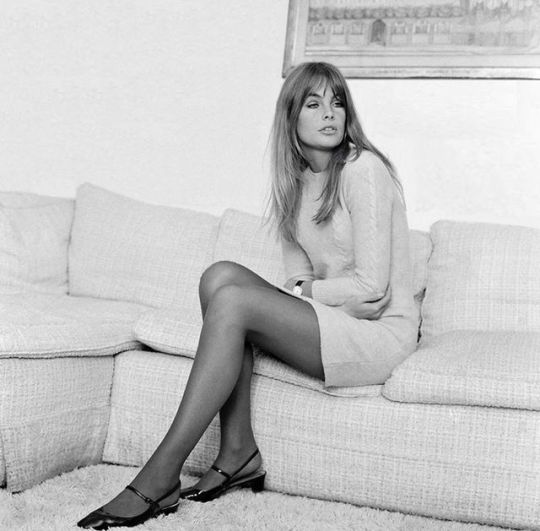

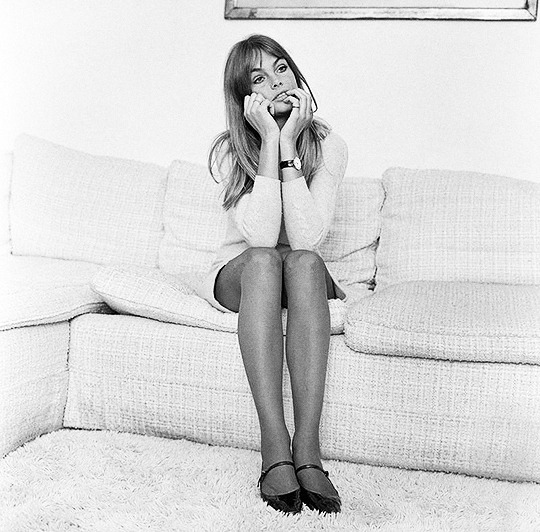

Jean Shrimpton by Bela Zola, 25th October 1967.
#jean shrimpton#bela zola#october#1967#1960s#60s#fashion#style#vogue#retro#decades#clothes#clothing#vintage#icon#classic#black and white#photography
401 notes
·
View notes
Text

maria tallchief photographed by bela zola/mirrorpix
19 notes
·
View notes